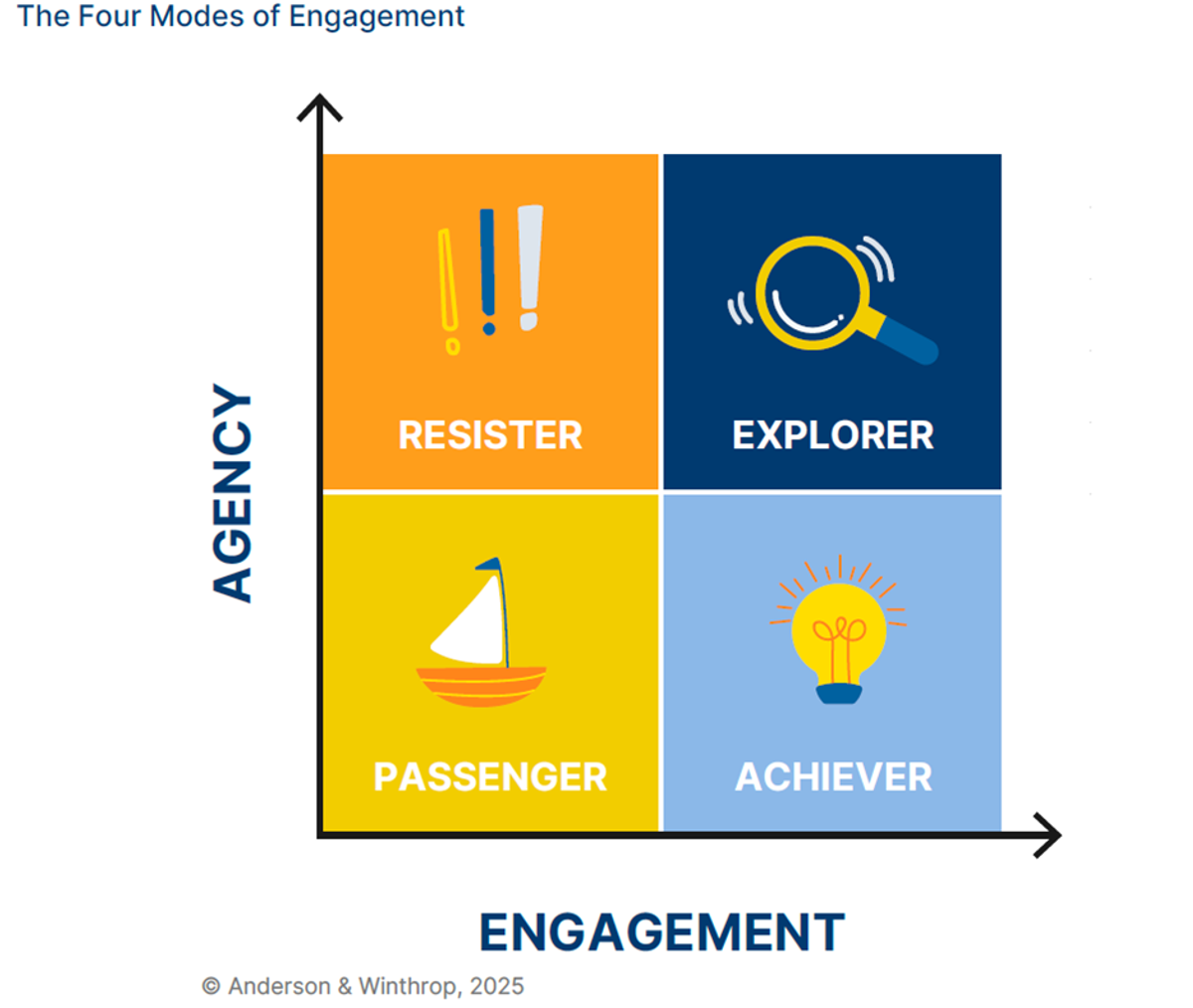From the Director of Strategic Initiatives

Resisters, Passengers, Achievers and Explorers: Engaged (and Disengaged) Learners
Recently I have been working with teachers as we think about engagement in learning and how do we really know when students are paying attention and engaged in classes. As I said in a recent video made for Stage Three parents, we have talented, polite and friendly students but this does not always translate to engagement in learning. At Blue Mountains Grammar School, we believe that every student is capable of deep learning, personal growth and finding purpose in their education. But what happens when students become quietly disengaged? They are still attending school, they are not causing any fuss, however not truly connecting with the learning experience. According to The Disengagement Gap, a 2025 Brookings Institution report, this silent, easily overlooked behaviour is affecting schools worldwide and offers timely insights for our own educational journey.
The Hidden Challenge of Disengaged Learners
The report highlights that while some students show visible signs of disengagement (poor behaviour, absenteeism), many others simply ‘go through the motions’. These students may sit quietly in class, complete classwork and assignments, and pass their subjects well, yet lack meaningful engagement, emotional connection, or a sense of purpose in what they are learning; they do what they need to do to get through but never really live up to their potential.
Brookings identifies this silent disengagement as a critical equity issue. While we may have thought it is linked to one or two demographics, in fact it is not limited to any one background, wealth band, gender or academic ability. We see some of the highest-achieving students fall into this group, fulfilling expectations, but feeling uninspired or disconnected. When these students are not challenged or supported to discover relevance in their learning, the long-term cost is enormous: diminished curiosity, reduced creativity, and lost potential.
Understanding the Four Types of Disengaged Learners
The report outlines four disengaged learner types, each with distinct characteristics and needs:
Resisters: These students actively push back against learning. They may not see any point in trying, see themselves as unlikely to succeed, feel alienated, or believe their identity isn’t valued at school. Their resistance is often a symptom of feeling marginalised or misunderstood.
Passengers: Quiet and compliant, these learners do what is expected but lack genuine interest. They are often overlooked because they cause no disruptions, yet they are missing out on the joy of discovery and bedrock knowledge that will be needed in later years. Their highlights of school are going to the canteen and break times.
Achievers: These students perform well but are driven by external validation: grades, awards, or approval. They can become anxious, perfectionistic, or disillusioned if they don’t see personal meaning in their efforts. I would put Lisa Simpson in this category, for those of a Simpsons generation.
- Explorers: These students are naturally curious and driven by interest, but these students may disengage if the school environment feels too rigid, test-focused, or irrelevant to their passions. They are talented and reflective and believe there should be more to schooling that simply passing high-stakes testing.
Recognising these types in our own students is the first step toward re-engaging them not just academically, but emotionally and socially as well.
What Can Schools Do?
The Brookings report calls on educators, parents, and communities to rethink student engagement. It suggests that schools should:
Prioritise relationships and belonging: A student who feels seen, known and valued is far more likely to stay engaged. Building authentic teacher-student connections and fostering inclusive environments are essential. Mr Coote has recently written about how this links to attendance also.
Make learning relevant: Engagement increases when students can connect their learning to real-world problems, future goals, or personal interests. Giving students autonomy and linking it to current challenges boosts engagement.
Listen to student voice: When students are involved in shaping their learning experience through choice, feedback, and co-creation they take greater ownership of their education.
- Talk about learning: When teachers talk about learning, rather than performance the narrative shifts from product to process. That is, making links between topics, explaining the reasoning behind learning and showing alternatives and counter-arguments.
A BMGS Response
As a school committed to educational excellence and holistic growth, The Disengagement Gap resonates deeply with our vision, as well as what we are seeing in some of our own students. It challenges us to look beyond grades and surface participation and ask: Are our students truly engaged? Do they feel a sense of purpose in their learning? How can we link to our purpose of Good Learning Doing Good?
There is a lot more to talk about on this topic including the use of mobile phones and laptops, attention spans, classroom resources, mandatory curriculum, pedagogical models etc. We should also address the juxtaposition of skills and content, and how the gap between these two is changing. However, there is too much in this to include in this single article.
This year we are continuing to refine our approaches to engagement by strengthening pastoral care, integrating student voice into curriculum planning, and expanding opportunities for authentic, interdisciplinary learning. Whether it’s through outdoor education, project-based learning, or leadership opportunities, our goal is to help every student from Resister to Explorer discover joy, meaning, and growth in their school journey.
We want all students to reach their potential and have high expectations of what they can achieve. We owe it to them and to each other to actively critique our approaches and ensure that it appropriate for the range of learners we have in our classes.
If you would like to discuss this topic or any other topics I have written about in previous newsletters, please email csanders@bmgs.nsw.edu.au to organise a time to have coffee and catch up.
The full report can be found here
Christopher Sanders
Director of Strategic Initiatives
